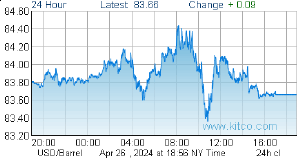The following article has been republished with permission, for the benefit of BMR readers, from Money and Markets. Money and Markets is a free daily investment newsletter from Martin D. Weiss and Weiss Research analysts offering the latest investing news and financial insights for the stock market, including tips and advice on investing in gold, energy and oil. Dr. Weiss is a leader in the fields of investing, interest rates, financial safety and economic forecasting. To view archives or subscribe, visit http://www.moneyandmarkets.com.
By Bryan Rich
Next month, the Fed will be winding down its second round of quantitative easing. But will it be for good?
Back in August, at a meeting of global finance officials in Jackson Hole, Wyoming, Fed Chairman Bernanke planted the first seed that QE2 was coming.
At that point, all of the hopes of a sharp 2010 economic recovery evaporated, as the economic data from mid-summer forward had signaled another bout of deflation and recession were coming.
The Fed’s antidote?
Tell the world you’re willing to do whatever is necessary to manufacture growth, period. And then promote higher stock prices to make people and companies feel a little more financially stable and wealthy. Consequently, consumer spending will go up and unemployment will go down.
Well, the perception of “easy money” was enough to induce speculators to make leveraged bets on both stocks and commodities. As such, stocks went higher and commodities went higher. And the jobs data improved a little bit.
Now, QE2 is coming to an end. And this time, as with 2010, so is the perception of a strong 2011 recovery. At the opening of the year, many economists were projecting growth in the U.S. to be as high as 5 percent. And the Fed was thinking 3.4 percent to 3.9 percent — an above average year of economic expansion.
Now the private forecasters polled by Bloomberg are saying 2.7 percent. And the Fed just downgraded its forecast to closer to 3 percent. But as you’ll see below, both of those are likely way too optimistic, again.
After the massive response given to the global financial crisis by all central banks and governments, the world still remains on unstable footing. And that’s exactly how another presenter at the Jackson Hole conference last August saw it then — and foresees it well into the future.
Back then Carmen Reinhart (University of Maryland), a co-author to Kenneth Rogoff (Harvard University) on the most extensive study done on historical global financial crises, presented some very sobering facts.
“We are already three years into this post-crisis window. The clock starts ticking in the summer of 2007.” —Carmen Reinhart, economist
Her research showed that historically …
Credit Buildups and Deleveraging
of Debt Are Long Cycles
Severe financial crises, like we experienced in 2007-2008, are usually characterized by a buildup of credit for a decade, according to Reinhart. And the unwinding of all of the debt tends to take a decade following the crisis.
Reinhart’s research further suggested that throughout this 10-year deleveraging period …
Economic growth will trend at lower levels than pre-crisis growth.
How it’s playing out: The U.S. has grown at a historical average of 3 percent per year. Even with unprecedented stimulus it’s been growing below trend since 2006. And recent data suggests another dip into recession is coming …
A Bloomberg study shows that since 1948 whenever GDP falls below 2 percent, it normally predicts recession for the U.S. economy. In April, the Bureau of Economic Analysis (BEA) gave their advanced estimate for Q1 2011 growth at 1.8 percent!
Unemployment will hover around 5 percent higher than pre-crisis levels.
How it’s playing out: Even after two rounds of quantitative easing by the Fed and two rounds of fiscal stimulus by the U.S. government, employment still sits about 5 percent over the long run “natural rate” of unemployment.
And housing prices will remain anywhere from 20 percent to 50 percent below peak levels.
How it’s playing out: The government has recapitalized the banks, the Fed has kept mortgage rates historically low, and various failed mortgage programs have been floated. Yet the Case-Schiller housing data shows housing still 32 percent off of 2006 highs.
As for the deleveraging phase: If the credit boom took at least a decade to build and will take as long to unwind, this chart of U.S. consumer credit puts it all in perspective for the world economy.
As you can see, consumer credit peaked in 2008 when Lehman Brothers failed. Given the studies I’ve outlined, it likely means the world is in for another seven years of economic malaise.
With all of this in mind, even though the persistent easy money policies of the Fed have been highly scrutinized, it’s this analysis that exposes a scenario that the Fed fears, yet many others have chosen to ignore: Another violent downturn for the global economy.
Regards,
Bryan
Bryan Rich began his currency trading career with a $600 million family office hedge fund in London. Later, he was a senior trader for a $750 million leading global hedge fund in South Florida. There, he helped manage and trade a multi-billion dollar foreign exchange options portfolio. Today, Bryan is the editor of World Currency Trader, a service designed to give you everything you need to trade currencies that offer the greatest profit potential with the least amount of risk.
 BullMarketRun.ca
BullMarketRun.ca









BMR YOU ARE A TOTAL JOKE!!!!!!!!!!!!!!!!!!!!!!!
Comment by DR. A. G. BERNATH — May 21, 2011 @ 6:02 pm
Just like some of your poor analysis on stocks ie(VGN, SFF, GQC) to get folks to buy in, this one is another one out of the ballpark! There is no way the Fed would approve another round of easy money! Buyer beware of this site.
Comment by Mike — May 23, 2011 @ 6:16 am